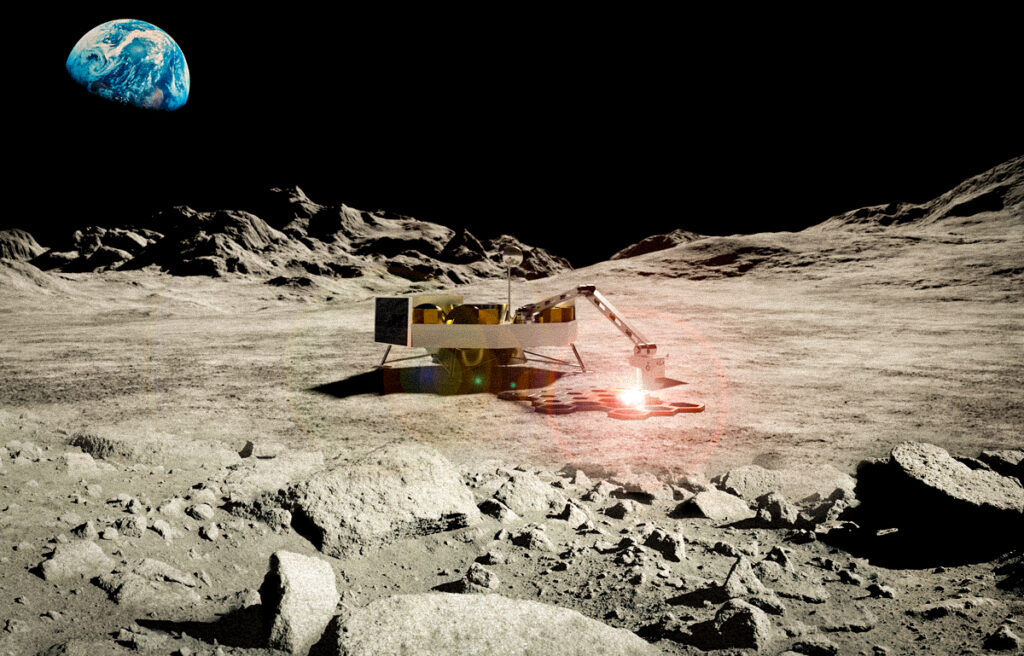Introduction
The Moon, Earth’s closest celestial neighbor, has fascinated humanity for centuries. From early astronomical observations to the Apollo 11 moon landing in 1969, the Moon has been central to our quest for knowledge about the cosmos. As space exploration continues to advance, the Moon is once again at the forefront of discussions about future space exploration, colonization, and resource utilization.
In recent years, scientific advancements, private-sector interest, and international cooperation have rekindled the idea of lunar exploration. The Moon’s potential as a base for deeper space exploration, its untapped resources, and its significance in the context of human expansion beyond Earth make it a critical focus for future missions. This article will explore the future of the Moon, focusing on colonization, resource extraction, and exploration.
1. The Moon as a Gateway for Deep Space Exploration
A Stepping Stone to Mars and Beyond
The Moon has long been considered a potential stepping stone for further human exploration of the solar system. As a destination relatively close to Earth—approximately 384,400 kilometers (238,855 miles) away—it provides a unique opportunity for testing new technologies, life-support systems, and space habitats before embarking on more distant missions, such as to Mars or the outer planets.
NASA’s Artemis program, which aims to land “the first woman and the next man” on the Moon by the mid-2020s, is a major step toward returning humans to lunar soil. This program is not only focused on exploration but also on creating a sustainable presence on the Moon. The ultimate goal is to use the Moon as a launch pad for future missions to Mars and beyond.
By establishing a permanent lunar presence, humanity could learn valuable lessons about long-duration space travel, the challenges of living on another celestial body, and the technologies needed for survival in deep space.
2. Colonizing the Moon: A Sustainable Human Presence
The Challenges of Lunar Colonization
While the Moon presents a wealth of opportunities for exploration, colonization is not without its challenges. Establishing a permanent human presence on the Moon will require overcoming numerous obstacles, from building habitats that can withstand extreme temperatures to ensuring a reliable supply of food, water, and oxygen for astronauts.
One of the most significant challenges is the lack of atmosphere on the Moon. Without an atmosphere to protect against cosmic radiation and micrometeorites, any habitats will need to be shielded effectively. Regolith, the loose soil found on the lunar surface, is being considered as a potential building material, as it can provide insulation and protect structures from radiation.
The extreme temperatures on the Moon also pose a challenge. Temperatures can swing from -173°C (-280°F) during the night to 127°C (260°F) during the day. Developing energy-efficient heating and cooling systems will be crucial for maintaining a habitable environment.
The Role of Lunar Bases
A key aspect of future lunar colonization is the construction of lunar bases. These bases would serve as research stations, testing grounds for life-support systems, and manufacturing hubs for resources to support space exploration. NASA’s Lunar Gateway—a space station orbiting the Moon—will play a crucial role in lunar missions. It will serve as a staging point for crewed missions to the lunar surface and act as a platform for scientific research.
In addition to governmental space agencies, private companies are also getting involved in lunar colonization. SpaceX and Blue Origin, among others, are developing technologies for landing cargo and crew on the Moon, building the infrastructure necessary for lunar exploration and potential settlement.
3. Lunar Resources: Mining the Moon for the Future
The Moon’s Untapped Riches
The Moon is not just a site for scientific exploration—it also holds valuable resources that could support humanity’s expansion into space. These resources include water ice, minerals, and rare metals. The ability to extract and utilize these resources could make lunar colonization sustainable and reduce dependence on Earth’s resources.
-
Water Ice: Water is essential for human life, and the discovery of water ice in the Moon’s polar regions has sparked significant interest. Water can be used for drinking, growing food, and generating oxygen for breathing. Moreover, it can be split into hydrogen and oxygen, creating rocket fuel for future space missions. The ability to extract water from the Moon would enable astronauts to stay on the Moon for extended periods without relying on supplies from Earth.
-
Helium-3: The Moon is rich in helium-3, a rare isotope that could be used in nuclear fusion to generate clean energy. While helium-3 fusion is still a theoretical energy source, it holds the potential to revolutionize power generation and could serve as a long-term solution to Earth’s energy needs.
-
Rare Earth Metals: The Moon’s surface contains significant quantities of rare earth elements like platinum, gold, and other valuable metals. These materials are essential for the production of electronic devices, solar panels, and advanced technologies. Mining the Moon could provide a new source of these metals, reducing the pressure on Earth’s finite resources.
Mining the Moon: Legal and Environmental Challenges
As interest in lunar resource extraction grows, so too do concerns over the legal and environmental implications of mining the Moon. The Outer Space Treaty, established in 1967, prohibits countries from claiming sovereignty over celestial bodies, including the Moon. However, the treaty is less clear when it comes to the rights of private companies to mine resources in space.
To address these issues, international agreements and frameworks for lunar resource extraction will need to be developed. It will be crucial to balance the economic benefits of mining the Moon with environmental protection and the fair distribution of resources among all nations.
4. The Moon’s Role in International Collaboration and Space Diplomacy
Global Cooperation in Lunar Exploration
The future of lunar exploration and colonization will require international collaboration. Space exploration is an inherently global endeavor, and nations and private companies must work together to share knowledge, technology, and resources. Partnerships between space agencies like NASA, the European Space Agency (ESA), and China’s CNSA will be essential in pooling resources and expertise.
The establishment of international lunar bases and the joint pursuit of lunar mining could foster global cooperation, advancing the peaceful use of space and promoting unity in the exploration of new frontiers.
Space Diplomacy: A New Frontier for International Relations
As the Moon becomes an increasingly important part of space exploration, space diplomacy will take on greater significance. Discussions surrounding the use of lunar resources, the construction of lunar habitats, and the governance of lunar activities will require careful negotiations and the establishment of new international treaties. This will involve not only governments but also private-sector stakeholders.
5. Conclusion: A Bright Future for Lunar Exploration
The Moon’s future as a hub for colonization, resource extraction, and space exploration is full of potential. Advances in technology, international collaboration, and the growing interest from both governmental space agencies and private companies indicate that the Moon will play a crucial role in humanity’s expansion into space.
While challenges remain—such as creating sustainable habitats, ensuring equitable access to lunar resources, and developing the necessary infrastructure—the possibilities are vast. The Moon may soon serve as the first permanent human settlement beyond Earth, providing the resources and knowledge needed to explore Mars, the outer planets, and beyond.
In the coming decades, humanity’s presence on the Moon will no longer be a mere dream; it will be a reality, marking a new chapter in space exploration and the future of human civilization.







